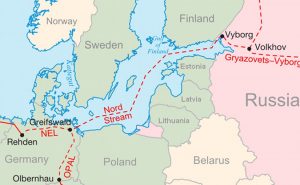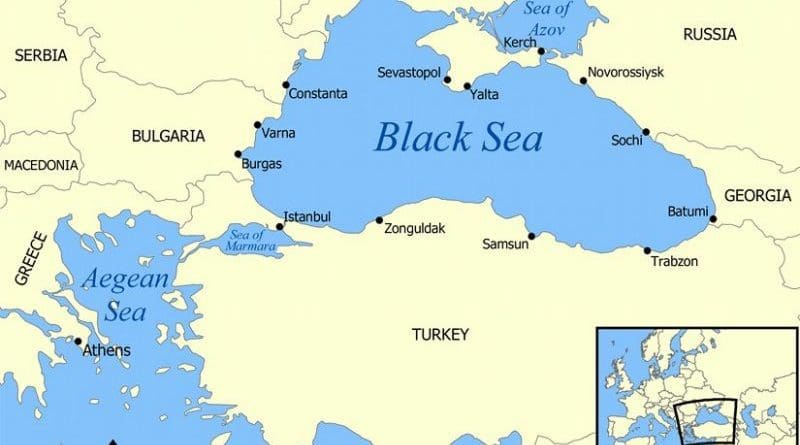Changing Geopolitics Of Natural Gas In Black Sea Region – Analysis
By Published by the Foreign Policy Research Institute
By Anna Mikulska*
(FPRI) — Russian dominance over natural gas deliveries into Europe has been weakening, thanks in large part to the new ways in which natural gas can be transported as well as new sources of supply. These developments are transforming the geopolitics of natural gas in the Black Sea region. Turkey hopes to exploit its geographic position to become a natural gas hub for Europe.
New natural gas pipelines running from Russia and Azerbaijan towards the Black Sea region will certainly remodel the geopolitics of natural gas in Europe. Also, relations between Black Sea states will undergo important changes as Turkey grows in geopolitical importance for both the region and Russia, while Ukraine will lose prominence as a designated transit country for natural gas. Notably, Russia stands to lose some of its political influence in the region as new non-Russian sources of natural gas come online.
The Current Situation: Russia’s Role Reduced
Historically, Europe has depended on Russia for its natural gas supply, much of it shipped via the Black Sea region. European imports from Russia oscillated between 20% and 30%. And until the last decade, these deliveries were relatively stable and uneventful. Even during the Cold War, the Soviet Union refrained from deriving political benefits from Western Europe’s dependence on its natural gas.
But this stable relationship began to change as the iron curtain fell and Russia lost its grip on Eastern Europe. Reduced control over transit countries such as Belarus and Ukraine has disrupted stable deliveries of natural gas to Europe.
Consecutive breaks in Russian gas supplies to Europe via Ukraine (2005/2006, 2007/2008, and 2008/2009) culminated in the total shutoff of natural gas supplies for Ukraine after Russia invaded and annexed Crimea in 2014. These actions amplified European concerns about the security of the gas supply and encouraged Europe to reduce dependence on Russian gas. If unchecked, this dependence gives Russia too much influence over domestic policies, especially in Eastern and Central Europe, where some countries rely completely on Russian natural gas supplies.
Consequently, Europe has diversified its natural gas supply. The changing natural gas market has allowed Europe to diversify. Discoveries of natural gas in the U.S., Australia, and Azerbaijan, together with the advent of commercialized liquefied natural gas (LNG), gave natural gas a global reach. LNG reduced regional dependencies because gas no longer needed to be shipped via pipeline. Today, U.S. or Australian natural gas can flow freely to any place in the world in the form of LNG and can compete with the regional suppliers like Russia or Norway, which deliver gas via traditional pipeline infrastructure. Thus, today, the natural gas market is beginning to resemble the oil market, where price—rather than location—determines transactions.
Natural Gas Sources Expanding and Diversifying
Eastern European countries see these new conditions as an opportunity to reduce their dependence on Russian natural gas. Many of these countries, which have relied on Russia for much, if not all, of their supply, support diversifying away from Russia, including by increasing LNG imports. Lithuania and Poland have recently completed LNG import terminals and are planning to expand them. Poland aims to build another terminal by 2020. Estonia has two facilities slated for completion by 2020.

In addition, Eastern Europeans support importing natural gas from Azerbaijan via the Trans-Anatolian Natural Gas Pipeline (TANAP) that is under construction. Conversely, Eastern Europe is opposed to Nord Stream 2, which many people in the region argue will expand dependence on Russian gas into the future.
Western Europe, which consumes less Russian gas, focuses more on guaranteeing dependable supply rather than limiting Russian influence. Western Europeans generally tolerate diversification away from Ukrainian transit routes. For example Germany, which has strong economic ties to Russia, sees Nord Stream 1 and the planned Nord Stream 2 as a solution. These two pipelines would deliver Russian natural gas directly to Germany via a route under the Baltic Sea. This plan is in line with Russia’s strategy to avoid using Ukraine as a transit country. This strategy also entails resurrecting Russia’s plans for South Stream, a pipeline that first intended to enter Europe via Bulgaria and Romania, but faced regulatory issues within the European Union. The new plans avoid the EU’s regulatory and compliance issues by re-routing the new pipeline through Turkey.
The Consequences: A Change in Roles for Russia, Ukraine and Turkey
The changing natural gas trade in Europe is re-shaping the Black Sea region. One consequence is that Russia’s position will weaken, creating a new role for Turkey as an intermediary between Russia and Europe. Another consequence is that Turkey will become a country where two major natural gas pipelines meet: TANAP and the Turkish Stream.
Russia. With new supplies of natural gas to Europe coming either via TANAP or in the form of foreign LNG, Russia’s dominance over Europe’s energy supply will weaken. As existing long-term contracts expire, Russia may have to cut prices if it is to remain competitive with LNG. Russia, eager to keep its reputation as a dependable natural gas supplier, will diversify its transit routes away from Ukraine. This plan includes swapping the South Stream for the Turkish stream. The move is important not only for Russia’s trade with Europe, but also for its future ventures. Lack of dependability and Europe’s move to reduce its dependency on Russian gas has already put Russia in a weaker position vis-à-vis China. According to analysts, the 10 year long negotiations that ended in a Sino-Russian gas deal in 2014 included more concessions from Russia than from China. Beijing realizes that Russia’s expansion into Asia is a necessary step given Europe’s move away from Russian gas.
Russia’s reputation for dependability is crucial as it enters other markets where no direct pipeline connection is possible. Russian operators Novatek and Gazprom plan new LNG export terminals, including Arctic LNG 2, three LNG trains in Yamal, two LNG trains on the Baltic Sea, and a Shtokman-Teriberka terminal on the Barents Sea.
Ukraine. Russia hoped that Kyiv’s long-term reliance on artificially low-priced Russian gas would help build Russian political influence. As Ukraine’s drifted toward the EU and NATO, Russia hiked gas prices in retaliation. At first, Russia demanded higher gas prices and prompt payment of old debts accumulated over previous gas supplies. Then, in 2014, Russia took it one step further when it attacked Ukraine and seized Crimea.
Ukraine is trying to wean itself from Russian gas by importing gas from the EU. And while the country still remains a transit route for some gas destined for Europe, Russia has reduced the volume there in favor of the Nord Stream 1 or the Opal pipeline in Central Europe. This change has hit Ukraine’s finances, with estimates suggesting that Ukraine will lose $2bn in transit fees each year.
Ukraine must rethink its strategy, especially given pipeline developments and new LNG deliveries. The government has plans to restructure the country’s energy sector. Ukraine is eager to hop on the “LNG train” and is planning new onshore and floating facilities in the Odessa area, which should open by the end of this decade. The current instability, however, has a highly negative impact on all these efforts, especially as Turkey positions itself as a potential contender to take over Ukraine’s place on the market.
Turkey. Turkey has the most to gain as it becomes the new natural gas corridor to Europe. With confidence in dependability of supplies from Russia and Ukraine dwindling, Turkey is becoming a major transit country for Russian gas as well as for Azerbaijani gas. The massive Shah Daniz natural gas and oil fields in Azerbaijan may become a staple of the European energy diet.
But how Turkey plays its cards will be crucial for its future relations with both Europe and Russia. Most importantly, the country must be vigilant not to fall into Russia’s sphere of political influence. Russia has already provided Turkey with lower natural gas prices and promised further discounts when the Turkish Stream becomes operational. But this seemingly beneficial deal may have far reaching consequences in terms of Turkey’s dependence on Russia for low priced gas and on transit fees as a source of revenues.
The Regional Impact
Turkey is moving in the right direction by diversifying beyond Russia via TANAP and investing in LNG import terminals. At the same time, an agreement to build Turkish Stream, an expensive and long-term infrastructure project, signals that Russia and Turkey hope for more friendly relations and stronger economic ties going forward.
Beyond the Russian-Turkish relationship, the move towards Turkey’s role as an energy hub will redefine the country’s position towards other Black Sea nations. It may be a sign of better relations between Turkey and Greece, engaged for years in a conflict over Cyprus. Because both the TANAP and the Turkish stream will resurface at the Greek border, the countries will have strong incentive to put animosity aside in order to benefit from energy cooperation. On the other hand, Romania and Bulgaria will be on the losing part of the equation as they fail to receive the benefits of hosting the cancelled South Stream pipeline.
The energy landscape of the Black Sea is changing rapidly. The traditional balance of power is changing as Russia loses some of its grip on natural gas supply, and as new transit routes are being drawn via Turkey. But it will take time before the pipelines are built and gas starts flowing. Until then, we should expect the geopolitical games to continue.
About the author:
*Anna Mikulska, Ph.D., is a fellow at the Foreign Policy Research Institute and nonresident fellow in energy studies at the Baker Institute.
Source:
This article was published by FPRI

